|
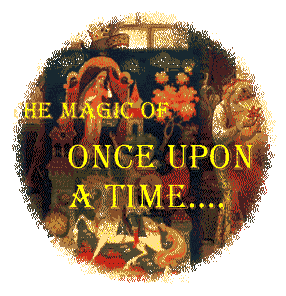
Narrative Logo - Click for Main Menu
Lecture
VII: One Religion all Religions
Vladimir
Propp and the Russian Folk Tale

Caption: Russian Folk Tale Illustration
Vladimir Propp extended the Russian Formalist approach to
narratology (the study of narrative structure). Where, in the Formalist approach, sentence
structures had been broken down into analyzable elements - morphemes - Propp used this
method by analogy to analyze folk tales. By breaking down a large number of Russian folk
tales into their smallest narrative units - narratemes - Propp was able to arrive at a
typology of narrative structures. By analyzing types of characters and kinds of
action, Propp was able to arrive at the conclusion that there were thirty-one generic
narratemes in the Russian folk tale. While not all are present, he found that all the
tales he analyzed displayed the functions in unvarying sequence.
this is from Jerry Everard's introduction to Vladimir Propp--and
he further goes on to suggest that the Star Wars stories fit surprisingly, or not so
surprisingly, into this pattern. Many of the tales we have looked at have a sequence
much like this:
Vladimir Propp Morphology of the Folktale
University of Texas Press: Austin and London (1968)
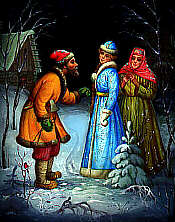
Caption: Russian Folk Tale Illustration
After the initial situation is depicted, the tale takes the
following sequence:
1. A member of a family leaves home (the hero is introduced);
2. An interdiction is addressed to the hero ('don't go there', 'go to this place');
3. The interdiction is violated (villain enters the tale);
4. The villain makes an attempt at reconnaissance (either villain tries to find the
children/jewels etc; or intended victim questions the villain);
5. The villain gains information about the victim;
6. The villain attempts to deceive the victim to take possession of victim or
victim's belongings (trickery; villain disguised, tries to win confidence of victim);
7. Victim taken in by deception, unwittingly helping the enemy;
8. Villain causes harm/injury to family member (by abduction, theft of magical
agent, spoiling crops, plunders in other forms, causes a disappearance, expels someone,
casts spell on someone, substitutes child etc, commits murder, imprisons/detains someone,
threatens forced marriage, provides nightly torments); Alternatively, a member of family
lacks something or
desires something (magical potion etc);
9. Misfortune or lack is made known, (hero is dispatched, hears call for help etc/
alternative is that victimized hero is sent away, freed from imprisonment);
10. Seeker agrees to, or decides upon counter-action;
11. Hero leaves home;
12. Hero is tested, interrogated, attacked etc, preparing the way for his/her
receiving magical agent or helper (donor);
13. Hero reacts to actions of future donor (withstands/fails the test, frees
captive, reconciles disputants, performs service,
uses adversary's powers against them);
14. Hero acquires use of a magical agent (directly transferred, located, purchased,
prepared, spontaneously appears, eaten/drunk, help offered by other characters);
15. Hero is transferred, delivered or led to whereabouts of an object of the search;
16. Hero and villain join in direct combat;
17. Hero is branded (wounded/marked, receives ring or scarf);
18. Villain is defeated (killed in combat, defeated in contest, killed while asleep,
banished);
19. Initial misfortune or lack is resolved (object of search distributed, spell
broken, slain person revived, captive freed);
20. Hero returns;
21. Hero is pursued (pursuer tries to kill, eat, undermine the hero);
22. Hero is rescued from pursuit (obstacles delay pursuer, hero hides or is hidden,
hero transforms unrecognizably, hero saved from attempt on his/her life);
23. Hero unrecognized, arrives home or in another country;
24. False hero presents unfounded claims;
25. Difficult task proposed to the hero (trial by ordeal, riddles, test of
strength/endurance, other tasks);
26. Task is resolved;
27. Hero is recognized (by mark, brand, or thing given to him/her);
28. False hero or villain is exposed;
29. Hero is given a new appearance (is made whole, handsome, new garments etc);
30. Villain is punished;
31. Hero marries and ascends the throne (is rewarded/promoted).

Caption: Russian Folk Tale Illustration
THE STRUCTURE OF FOLKTALES BY VLADIMIR PROPP
The morphology of the folk tale is included in this study of plot structures because of
its important theoretical contribution. Vladimir Propp published his work in 1928. His
method was one of abstracting the compositional pattern that underlies the structure of
the fairy tale. He noticed that previous attempts to classify the folktale according to
categories (mythological fairy tales, biological tales and fables, pure animal fables, and
genealogical tales) failed. Similar attempt to characterize the folktale by themes (the
unjustly persecuted, the hero-fool, the three brothers, the dragon fighters, the wise
maiden, the possession of the talisman, etc.) also failed. Tales, he noted, possess a
special characteristic in that it consists of a structures that can be readily transferred
from one folktale to another. These structures, he argued, are based on functions which
commonly reoccur within folk tales. This is because the participants in these stories
perform the same actions. This concern with action is reminiscent of
Aristotle's discussion of plot structures in The Poetics (Butcher, 1951).
These recurrent
functions of the dramatis personae provide the rational for the formulaic organization of
events within a folktale. Propp (1975). The functions which merit discussion within his
methodology center around center characters: The hero, the villain, the princess, the
donor, the helper, the dispatcher, and the false hero. Propp lists thirty one functions
which are built around these dramatis personae. It is questionable as to whether or not
all thirty one functions are needed. The plot structure may be overdeveloped. The
syntagmatic structure outlined in Propp's discussion of the Russian folktale is very
important because it provides the action plot for several genres. It is the structure
behind the Western. It is the structure behind the war action novel. And, it is the
structure behind the chivalric novels of knighthood.
Vladimir Propp was an active
participant in the Formalist Literary Movement (Jameson, 1972) in Russia
after the turn of the century. These scholars were interested in the internal laws that
govern literature. What they wanted to discover was the essence of literary form. The
Formalist worked with literary structures and for this reason they are often equated with
Literary Structuralists. However, there are some significant differences between them.
Structuralism was a synchronic enterprise which defined literary components in terms of
binary contrasts. What made a structure important was its
opposition.
What matters here is the totality of the system. For the Russian Formalists,
however, the search for literary structures was a diachronic enterprise. They were
interested in historical research rather than in mere analysis synchronic forms. The
objects studied in structuralism do not matter as they are defined in terms of contrasts.
One object can be replaced by another as long as the system of oppositions are not
disturbed. In Russian Formalism, however, the nature of the object is
important. It has a historical significance and cannot be substituted by another literary
form.
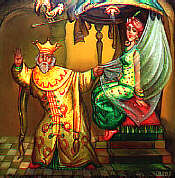
Caption: Russian Folk Tale Illustration
THE PLOT STRUCTURE OF FOLKTALES (By Vladimir Propp)
Folktales are all about quests. They begin in a quest and
end in a quest. The journey begins when the hero sets out from his home.
He is on a quest. He is searching for an object and this qualifies him as seeker hero.
Of course, there are
many obstacles along the journey. Early in the story, the hero is warned about certain
dangers. This foreshadows the nature of his quest and the trials and tribulations that he
must undergo. He is also helped. The helper is a part of the journey metaphor.
Such an
individual could be a guide, a teacher, or a mystical person or event.
The nature of the
journey changes when the villain enters the story. At this point, the hero encounter more
obstacles. He is tested and during these tests he is tricked, deceived and sometimes
abducted. In many cultures, the hero is given magical assistance as a means of overcoming
his quandary. The major figures in this drama soon encounter each other and the hero and
the villain engage in combat The hero is branded by this event and the villain is
defeated. The Hero soon returns to his home or village where he is recognized for his
deed. The villain (the false hero) is exposed and is punished for his evil traits.
The
hero is pursued and he is recognized as the true Hero. He ascends the throne and marries
the princess. In many quests, the real battles that the hero encounters are within.
In
Jungian psychology, for example, the hero is seeking his Shadow and must learn to accept
and understand his projections, viz. His anima. The princess represents this anima.
She
also has projects and they form her animus, the hero. When they are together they are
united as one; they become individuated.
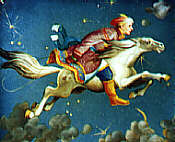
Russian Folk Tale Illustration
Theorems:
1. The functions of characters serve as stable, constant elements in a tale, independent
of how and by whom
they are fulfilled.
2. The number of functions known to the fairy tale is limited.
3. The sequence of functions is always identical.
4. All fairy tales are of one type in regard to their structure.
Functions:
After the initial situation (a) (e.g., "Once upon a time, long long ago and in a far
off land"), there follow in true oral
folktales thirty-one more possible "functions."
ß = absentation
g = interdiction
d = violation
e = reconnaissance
z = delivery
h = trickery
J = complicity
A = villainy/lack
B = mediation
C = beginning counteraction
= departure
D = first function of the donor (testing or interrogation)*
E = the hero's reaction
F = provision or receipt of a magical agent
G = spatial transference between two kingdoms, guidance
H = struggle
J = branding, marking (of the hero)
I = victory
K = initial villainy or lack liquidated (a pair with A)
¯ = return
Pr = pursuit, chase
Rs = rescue (of the hero from pursuit)
O = unrecognized arrival
L = unfounded claims
M = difficult task
N = solution
Q = recognition
Ex = exposure
T = transfiguration
U = punishment
W = wedding
* Some functions occur, when they occur, in necessary pairs, e.g., and ¯; some
functions may be freely
trebled, e.g., D.
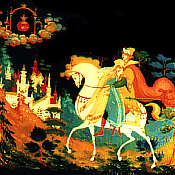
Caption: Russian Folk Tale Illustration
Continue
with Lecture VII.
|






